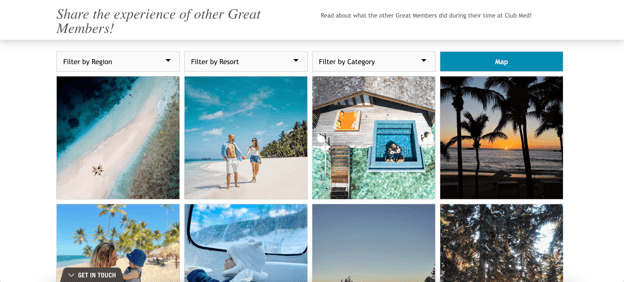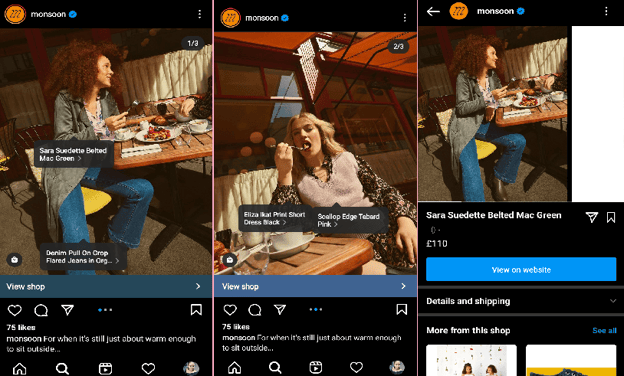If you took a photo with a new pair of Crocs shoes and uploaded it on social media, you, a user, just generated content for the Crocs company.
Now, whether Crocs decides to use your content for promotion or not is up to them. But if they did, they’ll have social proof of a satisfied customer that they can use for marketing to attract new customers.
That’s how user-generated content (UGC) works and why six in ten marketers see more engagement with UGC than branded content. UGC has several immense benefits and resonates with your audience to directly or indirectly influence their purchase decisions.
From increased conversions to grabbing customers’ attention and instilling trust, here are four benefits of user-generated content for your eCommerce store.
1. Ensures Your Credibility
Authentic content is the next best thing for social media users after giveaways. People care about originality and how a brand makes them feel to have a genuine connection with them.
With user-generated content, eCommerce businesses build customer relationships using off-the-cuff content created by users — which prospective buyers perceive as more authentic than promotional brand-created or influencer content.
UGC allows your audience, fans, or potential customers to view your brand through the lens of a happy customer, raising your credibility levels.
Ecommerce brands like AliExpress are crushing their Instagram marketing game with trustworthy content like this one below;

Source: Instagram
Apart from AliExpress’ public validation, if you look closely at the post, you’ll see an AliExpress fan who is excited about the product. The brand clearly resonates with the fan.
By leveraging the authentic experience of real customers, you, too, can engage potential customers and gain trust quickly for your eCommerce brand.
2. Increases Conversion Rate
Increased conversions are another significant benefit of user-generated content for eCommerce businesses.
Unlike influencer marketing, UGC promotes a product from the customer's perspective. Its authenticity is excellent social proof, almost like a trust seal. That’s why many online buyers use UGC as the sole reference for quality — it reassures them that your product works.
So, what better way to show them than with positive user-generated content?
For instance, UGC images can serve as social proof when you use them alongside a microcopy on your eCommerce landing page.
The Club Med company specializes in all-inclusive holidays for families. They feature a page full of user-generated content from their customers on their community website, encouraging people to share their experiences.

What’s great about their UGC strategy is that they made the UGC images shoppable to drive conversions. So when visitors click on an image, they get directed to a checkout page to book that experience.
Alternatively, using customer videos or testimonials in your abandoned cart emails can influence a potential buyer’s purchasing decision.
The bottom line is UGC drives conversion when used with other marketing campaign tactics as part of an eCommerce omnichannel strategy.
However, you’ll be doing a shoddy job if you slap UGC without a content plan at every touchpoint. The UGC strategy works best as part of a holistic marketing strategy; hence, you must develop a content roadmap to ensure you’ve covered all grounds in your campaign.
Consider investing in an AI writing assistant like Writer to ease the burden on written content production. That way, your brand voice also remains consistent as you scale different content types like blog posts and product descriptions for your marketing funnel.
3. Is Affordable and Effective
UGC is low-cost and effective, making it great for eCommerce brands without a big budget for expensive content creators.
Customers do the hard work — content creation, editing, and uploading them on social channels.
If they use a photo quality enhancer tool, this can further elevate the visual appeal of this user-generated content, making it more impactful and engaging for the audience.
All eCommerce brands have to do is seek permission from the creators to get their user-generated content featured on their social media page or website.
This reduces the time and bandwidth spent on content creation, enabling them to focus limited resources on other touchpoints across other marketing channels.
UGC is particularly effective for bootstrapped eCommerce startups or individual brands without a strong marketing team. For instance, if you sell online course materials, you could post UGC testimonials on your social channels to promote your digital product. You could also post them on your website.
Hello Fresh, for instance, posts UGC on its homepage.
Adding pictures of satisfied customers on the first page website visitors see is one way to get these visitors to learn more about the product. The thing is, Hello Fresh didn’t have to pay for this UGC. The brand didn’t have to pay for traditional social media ads or influencer content to promote its product either.
You could create an efficient process by sharing your UGC to your eCommerce store with content-sharing bots from Giosg. These no-code bots easily integrate with different social platforms, making it easy to share user-generated content directly on your website.
4. Enhances Social Commerce
Social commerce is one of the benefits of user-generated content for eCommerce brands doubling down on social media selling.
The main advantage of this benefit is that it allows your audience to convert directly to your social media page.
Instagram shopping, for example, enables social commerce. By giving your business account access to shopping features, Instagram allows people to shop for curated products on your page.
Utilizing UGC on your business's social page essentially transforms that touchpoint into an immersive storefront. You can harmonize this feature with UGC by tagging and linking to a checkout page for each product on the video or image content.
Fashion retailer, Monsoon, gets this. It encourages shoppers to share pictures of its products on social media with the hashtag #MyMonsoon, which the brand uses as UGC shoppable posts.
Images from these galleries are pulled into on-site galleries for customers to shop. By seeing real people wearing and enjoying the products, shoppers can visualize how the items will look on them.
Alternatively, go for live shopping if the Instagram Shopping feature is unavailable in your account. But you’ll need a robust and compatible solution for this to work. Your live shopping platforms should allow you to:
- Target the right audience
- Offer video streams on relevant website pages
- Gamify the experience with quizzes, and
- Customize the live shopping experience
Giosg offers a live shopping solution that lets you create an interactive shopping experience for your customers. You can also turn existing UGC video content into shoppable videos and even start conversations via live chat.
Wrapping Up
If you’re serious about reaping the benefits of user-generated content for your eCommerce store, you have to be strategic and set goals. Every UGC content you utilize must align with your overall eCommerce marketing strategy.
When you understand the type of content you need for your UGC strategy, you can strategically position them in ways that benefit your brand.
Display user-generated content in key touchpoints of the buyer’s journey to grab attention and drive sales. Optimize your processes with tools or solutions that make all the difference.
Ultimately, every eCommerce business can benefit from a UGC strategy, whether a startup or an established brand with a robust budget.
About the author
Plamen Popov is the content and communications specialist for Writer, an AI writing platform designed for teams. Plamen has previously worked to develop content marketing strategies for brands like MFG, Kinguin, Acronis and Metrilo.

